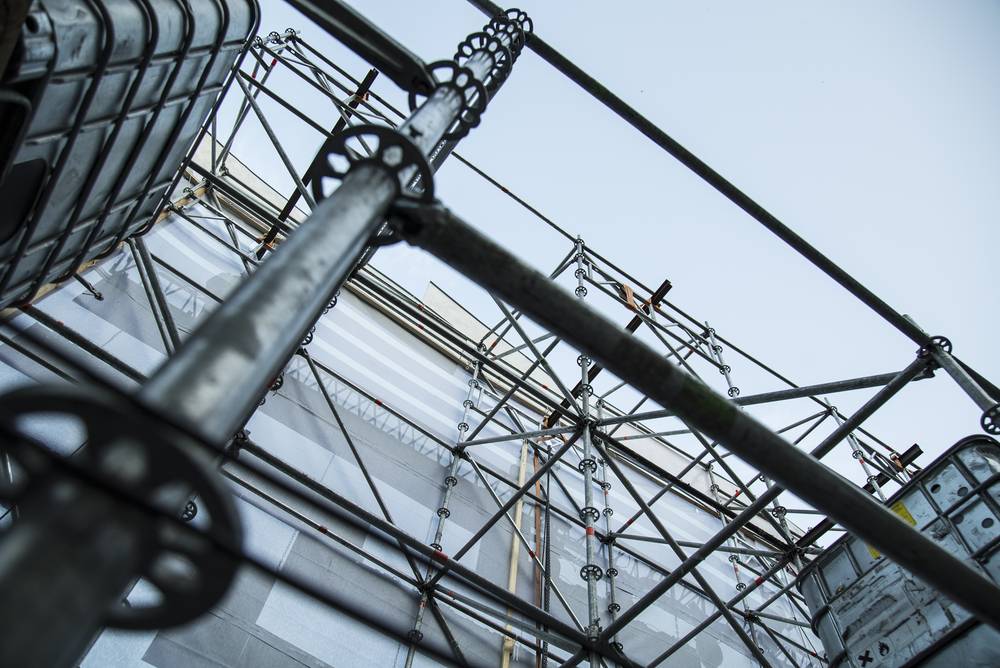Understanding Basic Components for Scaffolding
If you’ve never used scaffolding for a construction project before, you may not know all the components that are required.
Network Scaffold are seasoned experts in erecting and dismantling scaffolding on projects right across Derbyshire, Tamworth and the surrounding areas.
Every Component of Scaffolding Explained
Here we are going to explain all of the components required to make your scaffolding safe and secure –
Putlogs and Transoms – Putlogs and transoms should be horizontal and securely fixed to ledgers or standards with right-angled or putlog couplers. They will need to be supported with the flattened end placed right into the mortar bed joint of brickwork with putlogs approximately 75mm long.
Ledgers – Ledgers should be horizontal and securely fixed to inside of standards with right-angled load-bearing couplers. They also need to be fitted in such a way that joints are staggered between bays.
Ledger Bracing – Ledgers need to be fitted on alternative pairs of standards except where the width of the bays are 1.5mm or less, which means they should be fitted on every third pair. They should be fitted with ledgers or standards using load-bearing fittings, to the full height of the scaffold and start at the base level.
Standards – Standards should be fitted vertically or inclined slightly towards the structure and spaced in such a way as to give sufficient support. They should also be on a base plate, or on a base plate and sole board to prevent displacement and near to ledgers. Finally, standards need to be fitted so any joints are staggered between bays.
Longitudinal or Facade Bracing – These should be fitted to all scaffolds that do not get the longitudinal stability by any other means. Bracing needs to be connected to every lift of extended transoms with right-angled couplers or to every standard with swivel couplers. All joints should be manufactured with sleeve couplers.
Ties – Ties link the scaffold to the structure and help to resist inward and outward movement plus they give additional longitudinal stability.
Scaffold Boards – The minimum a scaffold board can overhang a putlog or transom is 50mm, with the maximum overhang dependant on the thickness of the board.
Decking – Decking and working platforms should be closely boarded to the full width where there is danger of a person falling more than two metres or more. Where boards overlap each other bevelled pieces need to be fitted to prevent tripped hazards. Decking should be of adequate width for the work it’s required for.
Guardrails – Guardrails are required when a person is liable to fall two metres or more, at a level between 910mm but not more than 1150mm above the working platform. If the guardrail is above 915mm, with a second guardrail or higher toe board, so the gap between the guardrail and toe board doesn’t exceed 765mm. Finally, if you remove the guardrail for access of materials, it will need to replace as soon as practically possible.
Ladder Access – Ladders on the workplace shouldn’t be painted or defective and placed on a firm footing. Ladders also need to be positioned as to give adequate footing on each rung. Access holes for ladders are required to be no wider than 500mm and as small as practicable in other directions.
Got any Questions? Contact us Today
If you have any questions about scaffolding and our services, please get in touch with Network Scaffold today.

